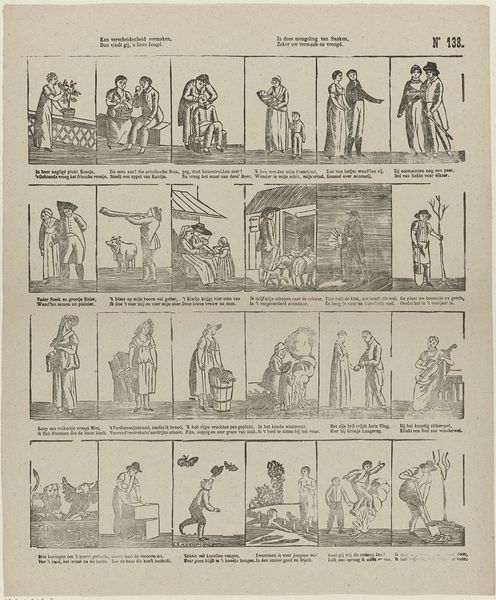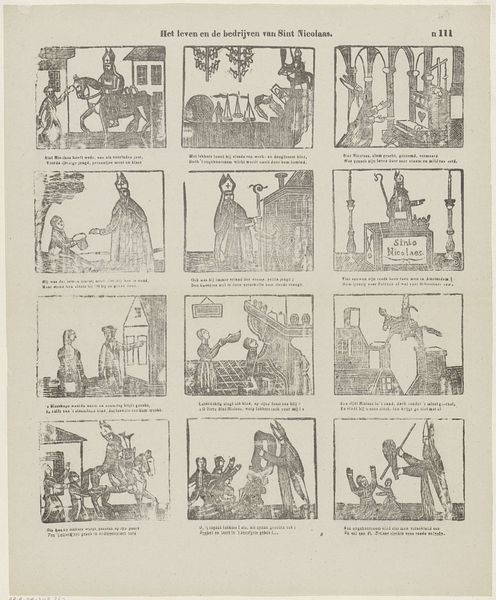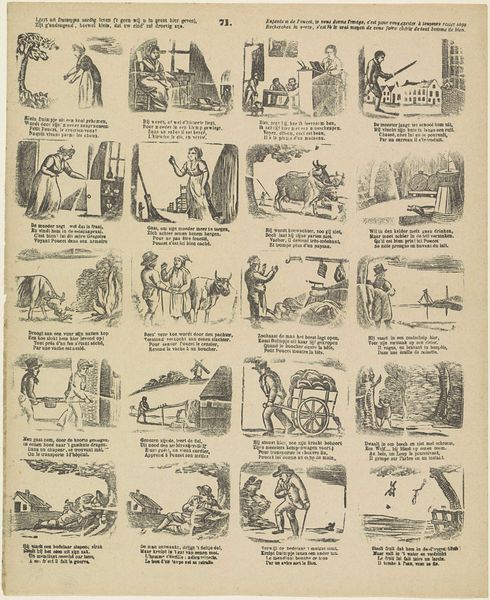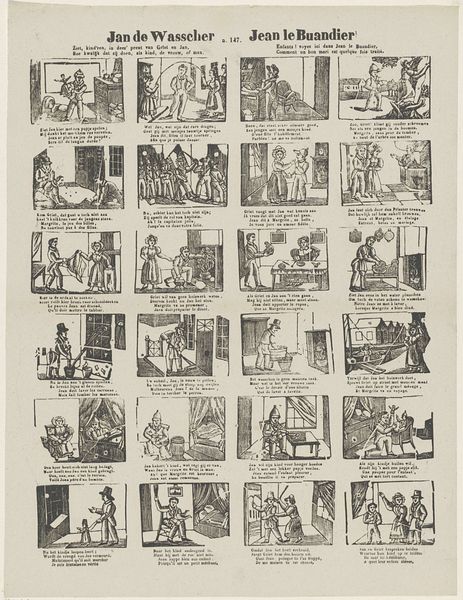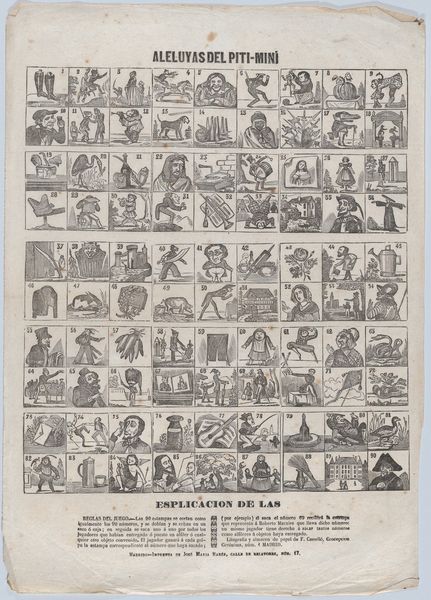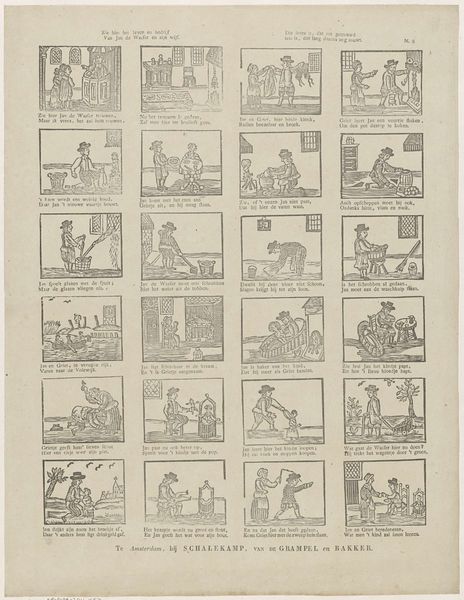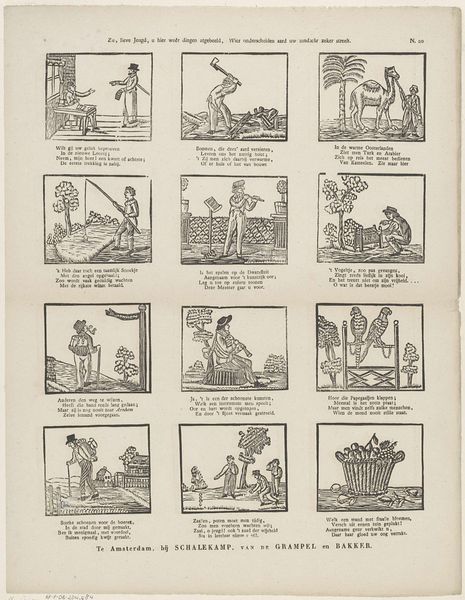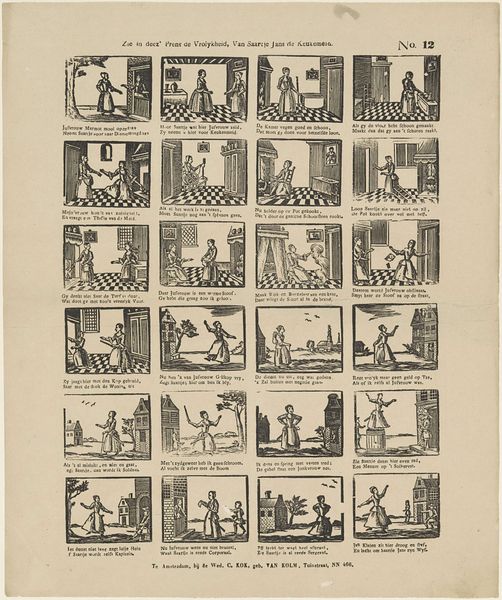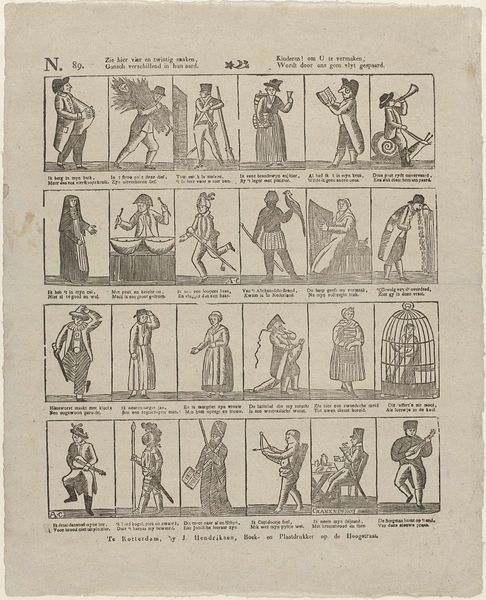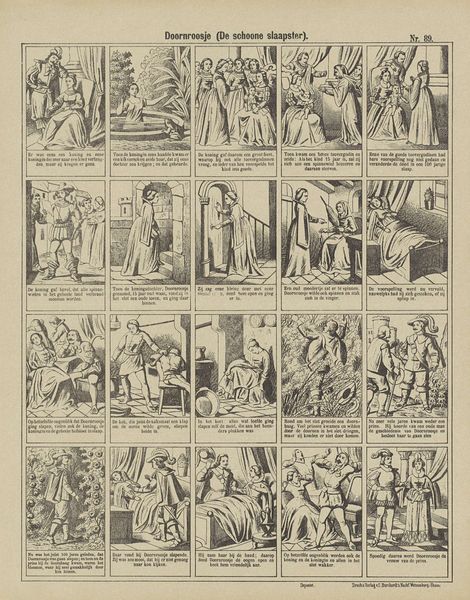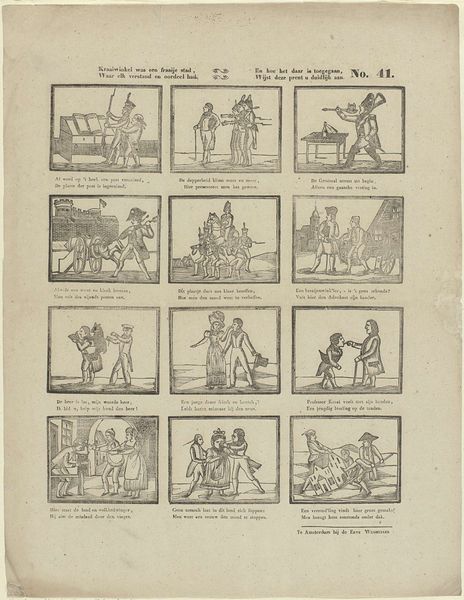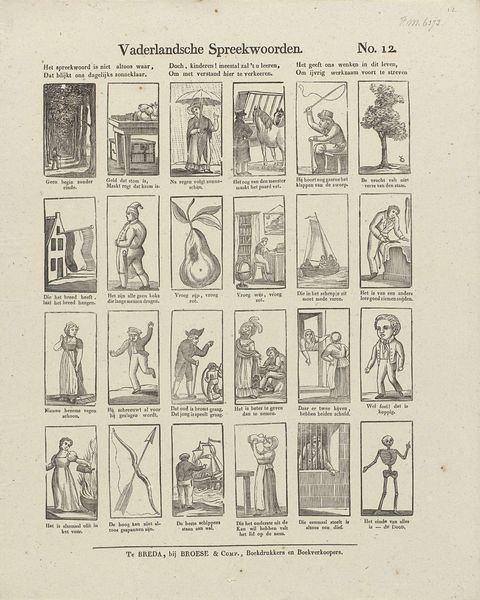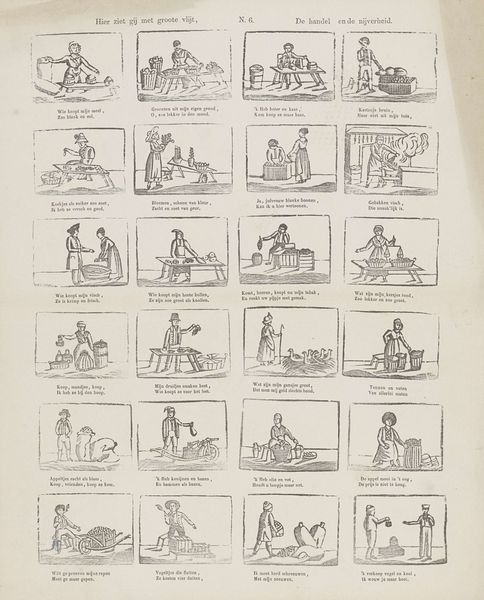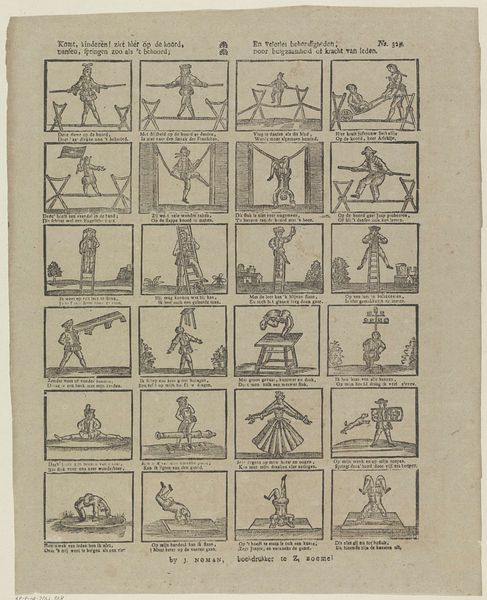
Broadside with 16 scenes showing gymnastic exercises 1860
0:00
0:00
drawing, print, engraving
#
drawing
#
comic strip
# print
#
figuration
#
men
#
genre-painting
#
engraving
Dimensions: Sheet: 17 5/16 in. × 12 in. (44 × 30.5 cm)
Copyright: Public Domain
Curator: Here we have a broadside from 1860 by José María Marés entitled “Broadside with 16 scenes showing gymnastic exercises.” It’s a print, an engraving, and depicts various acrobatic feats. What's your initial response to it? Editor: Well, immediately I’m struck by its almost playful air, despite being quite regimented in its composition. The sixteen panels create a kind of organized chaos of the body in motion. It reminds me of early forms of comics. Curator: It’s interesting that you mention comics. Considering its date, the broadside format here would have circulated widely amongst popular audiences. We should think about its social function; physical culture was promoted throughout Europe for constructing national identities and a healthy workforce. Editor: Absolutely. I’m also interested in the means of production. The sharp lines of the engraving seem almost mass-produced. It highlights the tension between the individual skill of the performers depicted and the industrialized processes bringing these images to a larger audience. Curator: And this speaks volumes about the intended public, perhaps even inspiring or instructing the viewer in turn-of-the-century fitness regimes, while also advertising it for popular spectacle. Gymnastics became quite a fad during this time. This item makes me think about the growth of modern media culture, including printing, as it sought new subject matter. Editor: Thinking about that audience... consider the labour involved in making and then distributing this printed work, particularly its availability among different social groups in Madrid. Also, it uses the gymnastic acts to maybe playfully demonstrate both the ability of the performers but also the work these feats represent as performative labour. Curator: These are excellent points. And I believe that through its aesthetic clarity we are getting an evocative glimpse into a society fascinated by the human body's capabilities but equally a need to market entertainment using novel technologies to larger and more heterogenous crowds. Editor: Ultimately, it shows us a lot of human ingenuity applied across both athletic practices and printing practices of 19th-century Madrid. It highlights that historical and material relationship.
Comments
No comments
Be the first to comment and join the conversation on the ultimate creative platform.
